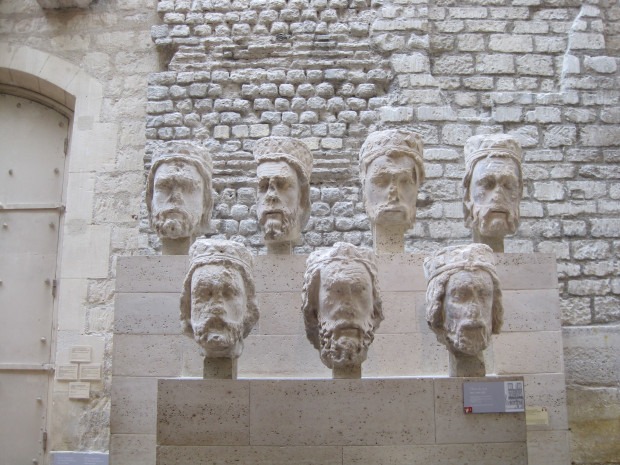By: Barnali Bose, Editor-ICN Group
On April 15, 2019, Paris woke up to the horrifying sight of the fire that seemed to engulf Notre Dame, in leaps and bounds.
The cathedral is consecrated to the Virgin Mary and considered to be one of the finest examples of French-Gothic architecture.
The majestic cathedral was built between the 12th and 14th centuries. It is revered by the French – Catholics, Muslims and Jews as part of France’s cultural and historical legacy.
The news of the devastating fire send waves of shock and submerged in inconsolable grief, one and all.

However,the fire also inflamed Yellow Vest Demonstrators, that had begun a grassroots movement on social media demanding economic equality in France.
Hundreds of millions of euros contributed soon after to restore the 850-year-old Notre Dame triggered an outpouring of pent-up rage in the ‘have nots’ against the‘ haves’.
Demonstrators held placards that read in bold, “Millions for Notre Dame. What about the poor?” and “Justice for all”.
Political experts say, that the movement has proved to be one of the biggest challenges to President Emmanuel Macron, whom many consider a “president of the rich”.
Hundreds were arrested and dozens injured as violence broke out between demonstrators and police in Paris.
French President Emmanuel Macron has on April 25 given a long-awaited response to appease the Yellow Vest protesters with promises of tax cuts, higher pensions and a reform of the civil service.
However the movement isn’t the first one to flare up centering the cathedral.
During the French Revolution in the 1790s, angry mobs and revolutionaries looted the medieval Gothic church—and even declared that it wasn’t a church at all.
1789 is one of the most significant dates in history – famous for the revolution in France with its cries of ‘Liberté! Egalité! Fraternité!’ demanding the removal of the domination of the French upper classes.
More than two dozen statues affixed to the church facade were publicly decapitated by a furious crowd that stormed the Bastille in Paris in 1789.
Let us recapitulate the sequence of events that had led to this catastrophic event .
At that time, the vast majority of French people were Catholic. The Church owned immense property and collected funds from most people’s incomes without paying taxes of its own. A growing number of French people tired of the Church’s almost unbridled power, revolted.
The monarchy toppled. A small group of radical revolutionaries who had been influenced by Enlightenment-era philosophies of freedom of religion and a reason-based society seized the opportunity to strip the Church of much of its authoritative power.
These revolutionaries embarked on a dechristianization campaign. They confiscated Church property and compelled the clergy to swear their loyalty to the new state.
As the Revolution gained steam, Parisians massacred and jailed priests during the September Massacres of 1792, and clergy were put on trial during the Reign of Terror.
In 1793, the new government announced that public worship was illegal. In response, people rushed into churches, stripping them of religious symbolism.
Notre-Dame de Paris had long been a symbol of the monarchy, too—a place where state holidays, and kings, were celebrated.
Henry VI of England was crowned king of France there in 1431. But revolutionary Parisians had had enough of its royal resonance.
The cathedral ‘s west facade featured 28 statues that portrayed the biblical Kings of Judah. In 1793, the new government ordered workers to remove them.

The 500-year-old statues were symbolic of monarchy and religion. Therefore, they were brought to the cathedral’s square and decapitated.
Twenty-one of the heads were only recovered in 1977, when workers unearthed them behind a wall in an old Parisian mansion.
However, that was not the end of the cathedral’s revolutionary role.
In November 1793, the cathedral became the site of the Festival of Reason, a revolutionary and anti-religious festival that not only mocked Catholicism but also suggested that French people should worship Enlightenment principles instead.
After the cathedral was ransacked, it became the stage for a packed public event in which a seductively dressed actress portraying the Goddess of Reason was worshiped atop a mountain.
Enlightenment philosophers’ busts and statues of the Liberty replaced religious statues.
The centuries-old cathedral was renamed the Temple of Reason. Almost everything inside was looted and plundered. Eventually, dechristianization extended all the way to instituting a new, atheist state “religion” devoted to revolution.
That concept was controversial though, and eventually Maximilien de Robespierre proposed The Cult of the Supreme Being, a civic religion that allowed for the existence of a God, but was rooted in revolutionary concepts.
In 1794, Paris hosted the Festival of the Supreme Being, a massive celebration that included music, parades and pageantry.
The temple of philosophy at the Feast of Reason at Notre-Dame de Paris, organized as part of the policy of dechristianization of the Paris Commune in 1793, France.
Despite revolutionaries’ determination to stamp out Catholicism permanently, most French people stuck to their religious beliefs.
“Parents refused to send their children to be instructed in the new civic religion; attendance for civil services and government festivals was chronically low,” writes historian Justin Dunn.
“Catholicism proved to be the stabilizing element that many segments of society could cling to amidst the storm of upheaval and change that was the French Revolution.”
After the Reign of Terror, Catholicism slowly regained acceptance in France. By then, though, many French clerics had left the country. Most of France’s churches were closed or converted for other uses. France’s violent separation of church and state was thus complete.
Despite its brush with destruction, Notre-Dame retained its powerful symbolism. After the Revolution, it bounced back into life.
Napoleon Bonaparte crowned himself emperor there in 1804. In the mid 19th century, it was restored to its former glory.
Now, centuries later, the cathedral has become the epicentre of another revolution- the Yellow Vests Movement yet again, though definitely not as forceful and decisive as the French Revolution.
The cause for discontentment is however similar- the fight against deprivation of the unprivileged classes and unfettered demand for social equality. As they say, History repeats itself. Seems to be quite true, isn’t it?




